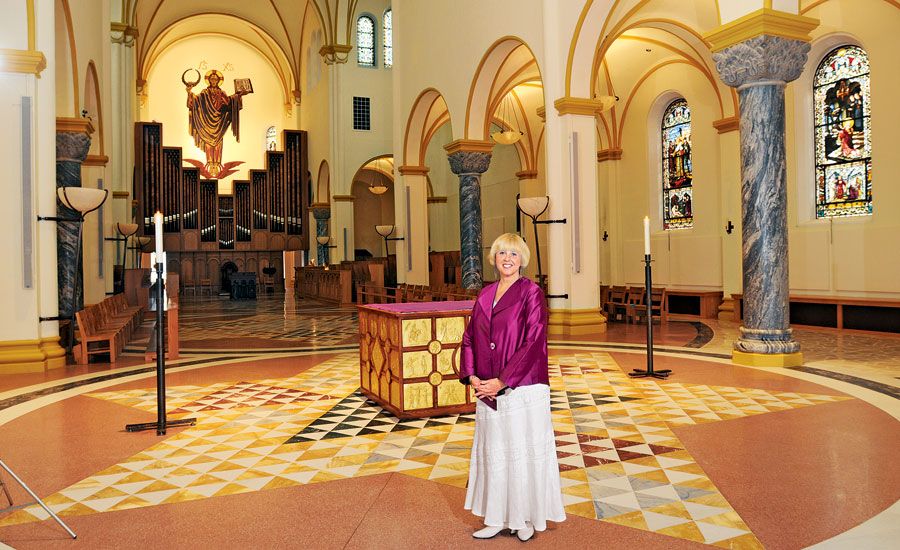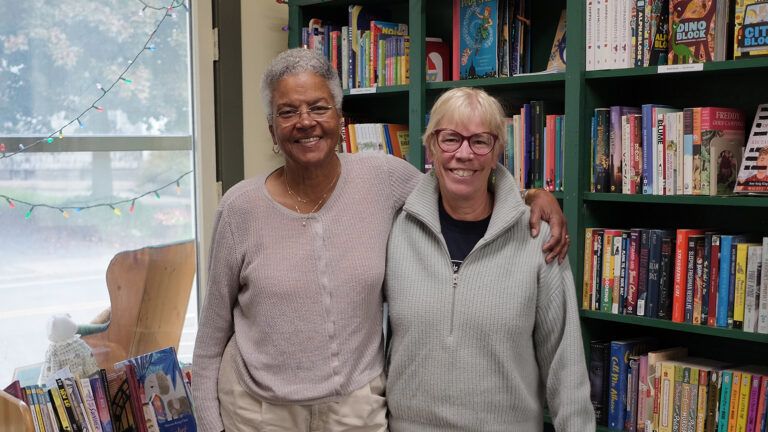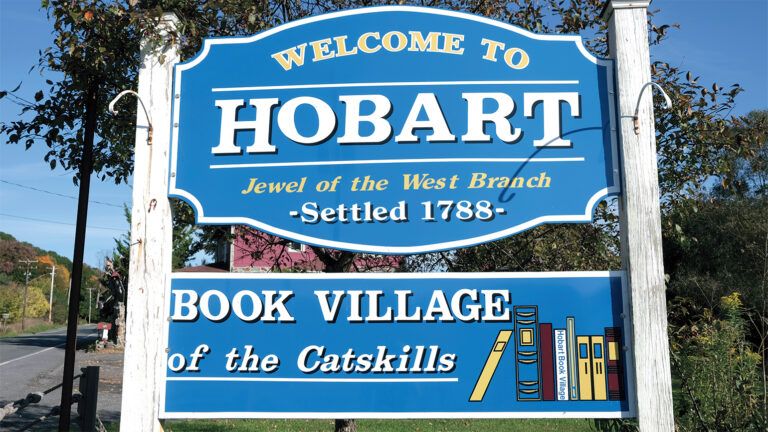Happy Birthday!” said my friend Lurlene, handing me a neatly wrapped present.
“Thanks,” I said. I could tell it was a book. A new devotional or an inspiring novel, maybe? I held it up to my ear and shook it. Lurlene giggled. It was my fiftieth birthday and Lurlene knew I’d been feeling restless lately.
My morning prayers and Bible reading felt stale. And no matter how involved I got in church—giving the children’s sermons, serving as a deacon—the activities didn’t fill my soul the way they used to. Spiritually I was in a rut.
Finally I unwrapped the present. It was a book all right, but a surprise, a travel guide, listing monasteries across the U.S. that took overnight guests. “Pick a place,” Lurlene said, “and I’ll treat you to a weekend. You need to get away, Mary Lou.”
But to a monastery? I wasn’t Catholic. I’d never met a monk and wasn’t even sure what they did all day. Still, I couldn’t turn down a gift.
There were several monasteries right here in Indiana. One in particular intrigued me, Saint Meinrad Archabbey, a five-hour drive away. The monastery was over 150 years old, founded by a group of Swiss monks who followed the ancient rule of St. Benedict.
All guests were to be greeted like Christ himself. I wasn’t sure what that meant, but the rule stressed two virtues that did sound familiar: work and prayer. Just like life on the farm where I grew up.
I signed up for a three-day retreat called “Lectio Divina—Praying with Scripture.” The monks would be my teachers.
On a bright spring day I found myself standing outside the biggest church I’d ever seen. Its spires seemed to poke the sky itself.
I checked in at the guesthouse. The monk behind the counter rolled up the sleeves of his robe to type my information into his computer. “Peace,” he said. “Dinner is at 5:30, right after evening prayer. Have a blessed stay.” He handed me my key.
The room was lovely—simple and comfortable. I looked out the window at rolling hills, paths winding through trees, and the huge chapel, like a piece of old Europe dropped on the Indiana soil.
Listening to the bells toll, I felt like I was in another world.
In class, I met some other guests. I needn’t have worried about feeling out of place. There were Baptists, Lutherans, Methodists and, yes, Catholics. But our teacher, Brother Brendan, gave us another name. He called us pilgrims.
“You’re travelers on an inner journey,” he said. He bounded around the room in his robe and workout shoes—workout shoes!—and explained lectio divina. The phrase meant “holy reading,” an ancient way of reading the Scriptures. He started by lighting a candle and calling forth the Holy Spirit.
“Create a ritual that sets your study time apart,” he said. He smiled impishly and added, “This is your homework, so take notes!”
We were to choose a Bible passage and read it aloud three times. The first go-around was to understand the facts—who, what, when and where. The second time we should picture ourselves as both storyteller and audience. The third time we were supposed to stop and rest with the words that appealed to us.
“Be alert to whatever calls to you,” Brother Brendan said. “Ask yourself why it’s important. How is it inviting you to practice your faith?”
This was what he called the meditatio, a time to meditate on the words. Then came contemplatio, sitting in silence and listening for the voice of God.
“Visualize a white expanse,” he said, “where you can erase every distraction.” This was going to be hard.
The last phase, the oratio, was for expressing our thanks to God for whatever we’d discovered.
Class was dismissed. I went for a walk around the grounds. The monks attended service five times a day. In between they taught classes and worked for St. Meinrad’s publishing business.
Some even worked in a carpentry shop producing poplar caskets, the abbey’s newest business, a brochure explained.
I slipped into the church for noontime prayers. Outside it seemed massive and heavy, but inside the space was filled with light and was surprisingly intimate. The marble floors had an intricate design of buttercream and garnet tiles that created a huge star of David under the four arches.
As I took a seat in the back row I noticed something I’d never seen in a church before. The rows of chairs faced each other, the monks in front and us guests in back.
A monk rose to read the Scripture, his voice resonating in the cavernous space. When he finished there was a pause. What was next? The silence lengthened. I looked to see if anyone else was standing up. Had someone forgotten his part?
Then I realized: No one was in a hurry. This was a holy time to be savored.
We sang from a small leaflet then prayed the psalms. It was wonderful, really, to lift my eyes from the printed sheet and see my fellow pilgrims speaking the ancient prayers to me.
I looked toward the monks and imagined them doing this five times a day for years. It put a whole new perspective on time. Not always rushing to do the next thing, but waiting, listening, making time for what was important.
That night I tried lectio divina. I did all right on the first part, reading the passage three times, but my mind wandered at the contemplation stage. “The Lord shall preserve thee from all evil,” I read, and caught myself thinking of fresh strawberry preserves we made on the farm.
I couldn’t visualize the white expanse Brother Brendan talked about.
“The closest I got was a pale blue,” I told him the next day.
He chuckled. “Keep practicing!”
I kept at it, alternating my reading with long walks, services, meal times and talking to the monks. There was something thrilling about waking before dawn to begin my day the same way monks have for centuries.
On the last day I was determined to try lectio divina once more, this time in the church. It was after the evening service and I was all alone, the smell of incense lingering in the cool shadows.
Recalling Brother Brendan’s admonitions, I sang softly into the stillness, “Come, Holy Spirit, I need you.” Then I turned to the passage I’d picked out.
“There is a time for everything, and a season for every activity under heaven…a time to search and a time to give up,” I read aloud. Once, twice, three times. The words that seemed to glow, that drew me to them, were “season” and “search.”
I closed my eyes and asked what those words said to me. Was this a new season for me? What was I to search for?
Instead of trying to come up with answers, I sat back in my chair. I let my mind, my whole self, settle into quiet. And I listened. In the silence, in the sacred space, the word that came to me was strong and clear. Me, God seemed to say. Search for me.
I didn’t have to think up new projects or volunteer for more assignments at church. I wasn’t supposed to do anything. What God wanted was for me to be with him. To rest in his love. That was what I’d been yearning for.
Just as my friend Lurlene hoped, I returned home spiritually reinvigorated, with a new way of reading Scripture and growing closer to God, and, yes, being a pilgrim in the silence.






